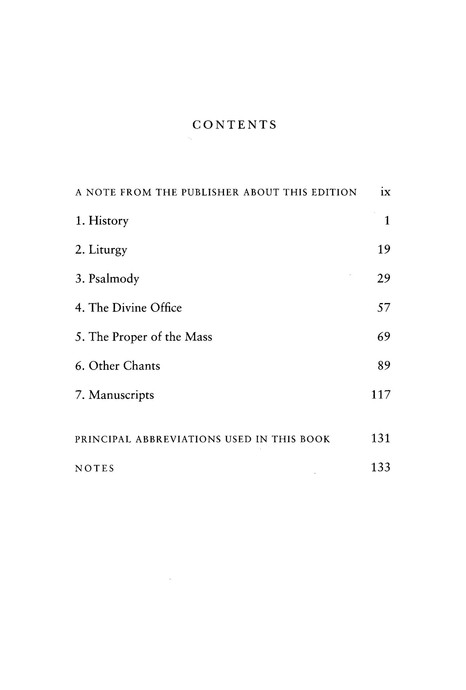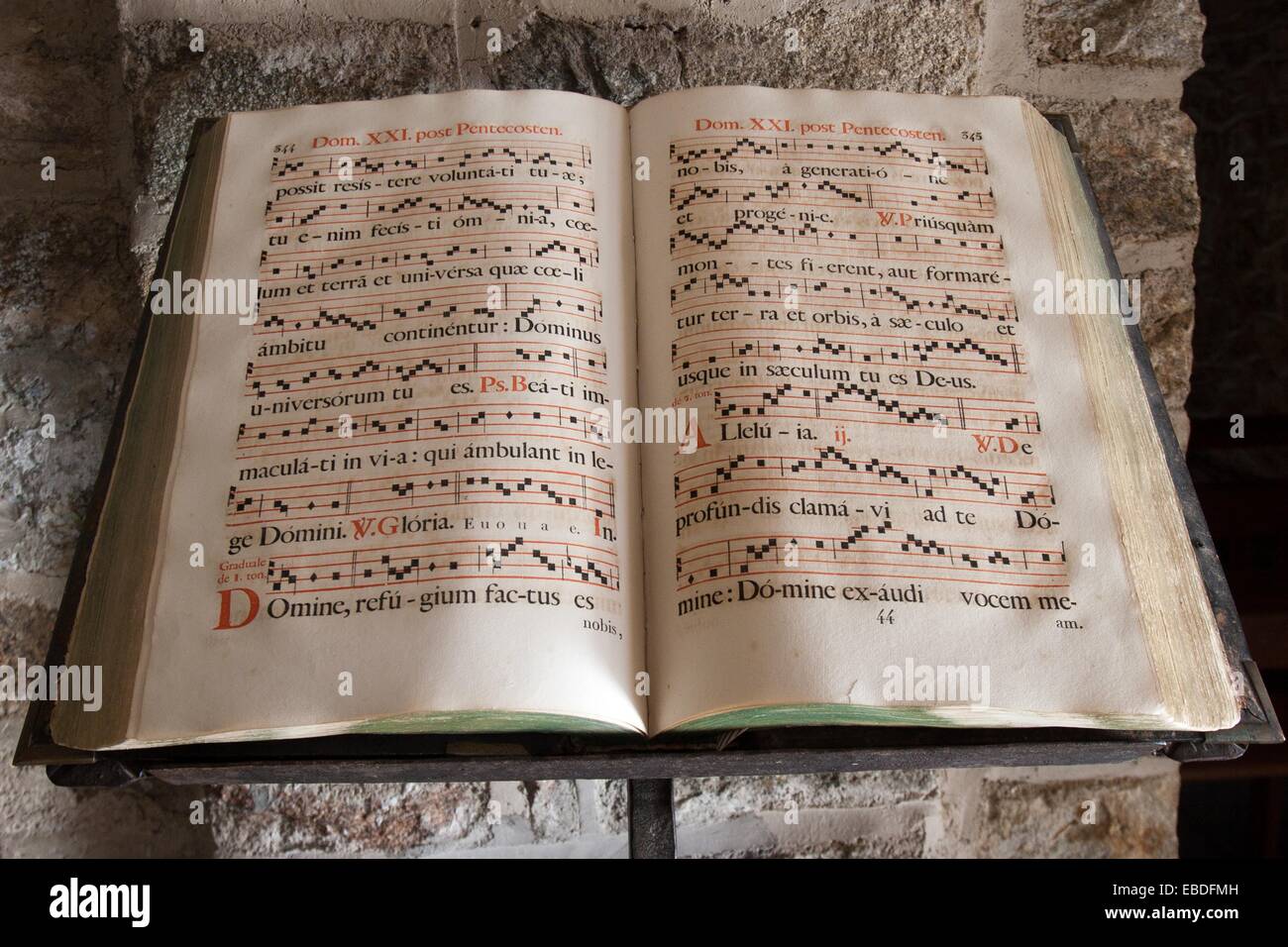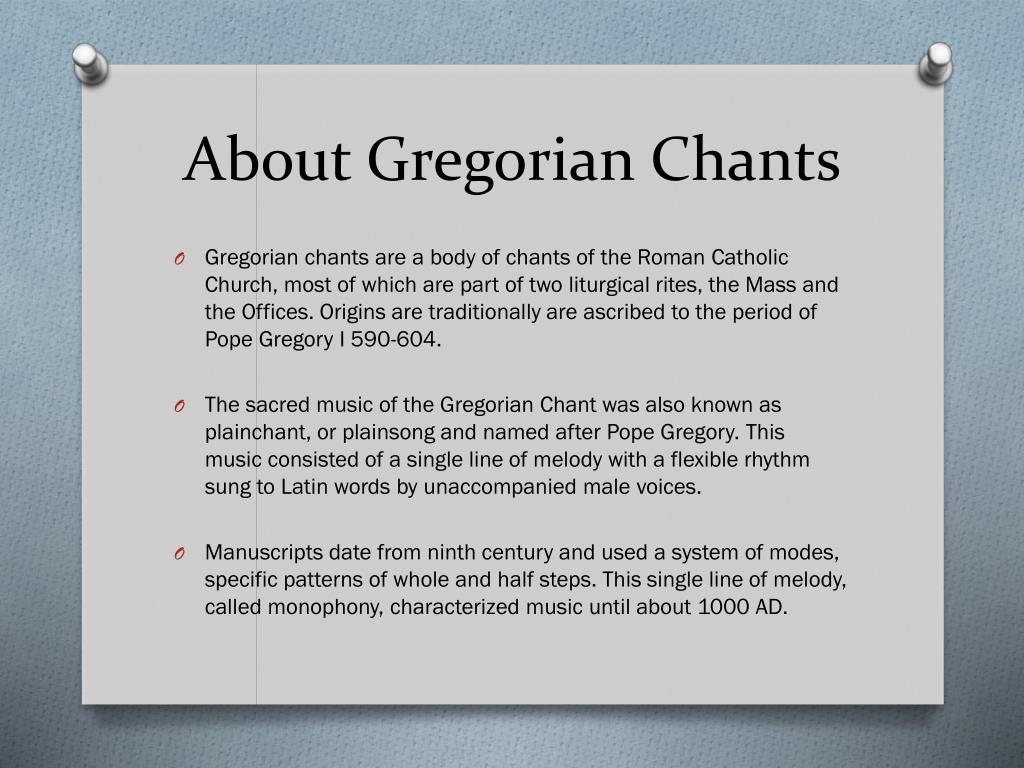

It is the official music of the Catholic Church’s. Gregorian chant can also be defined as 'sung prayer. It is sometimes referred to as plainsong, because it predates the use of harmony or polyphony. To the song The River of Dreams in the style of a monophonic Gregorian chant.The simple, pure lines of Gregorian chant go back to the origins of the first Christian communities and the earliest recorded Western music. Problems listening to this file? See media help.Viola Davis becomes most-nominated Black actress in Oscars history.
Gregorian chant originated in monastic life, in which celebrating the 'Divine Office' eight times a day at the proper hours was upheld according to the Rule of St. In general, the chants were learned by the viva voce method, that is, by following the given example orally, which took many years of experience in the Schola Cantorum. The resulting body of music is the first to be notated in a system ancestral to modern musical notation. It is named for Pope Gregory I, Bishop of Rome from 590 to 604, who is traditionally credited for having ordered the simplification and cataloging of music assigned to specific celebrations in the church calendar. Although the tradition proclaims him as the composer of chant, historical scholarship shows.Gregorian chant is the central tradition of Western plainchant, a form of monophonic liturgical music within Western Christianity that accompanied the celebration of Mass and other ritual services.
Newly composed music on new texts was first introduced within the context of existing plainchant. Although popular belief credited Pope Gregory the Great with having personally invented Gregorian chant (in much the same way that a bibilcal prophet would transmit a divinely received message), scholars now believe that the chant bearing his name arose from a later Carolingian synthesis of Roman and Gallican chant, and that at that time the attribution to Gregory I was a "marketing ruse" to invest it with a sanctified pedigree, as part of an effort to create one liturgical protocol that would be practised throughout the entire Holy Roman Empire.During the following centuries, the chant tradition remained at the heart of Church music and served as the dominant platform for new performance and compositional practices. In its long history, Gregorian chant has been subjected to many gradual changes and some reforms.Gregorian chant was organized, codified, and notated mainly in the Frankish lands of western and central Europe during the 11th to 13th centuries, with later additions and redactions, but the texts and many of the melodies have antecedents going back several centuries earlier.
Typical melodic features include characteristic incipits and cadences, the use of reciting tones around which the other notes of the melody revolve, and a vocabulary of musical motifs woven together through a process called centonization to create families of related chants.Although the modern eight-tone major and minor scales are strongly related to two of these church modes (the Ionian and Aeolian, respectively), they function according to different harmonic rules. (The practice of juxtaposing monophonic chant with polyphonic writing can be found as late as the French Baroque composer François Couperin (1668-1733), whose organ masses were meant to be performed with interludes of the appropriate plainchant.) Although it had mostly fallen into disuse after the Baroque period, Gregorian chant experienced a revival in the 19th century in the Roman Catholic Church and the Anglo-Catholic wing of the Anglican Communion.Gregorian chants are organized into eight modes (scales). The Parisian composers Leonin and Perotin, chief exponents of the Notre Dame school of the late 12th century, continued to end their organum compositions with passages of monophonic chant, so that continuity with the older tradition remained explicit.
It is the music of the Roman Rite, performed in the Mass and the monastic Office. As the dominating musical tradition throughout Europe, Gregorian chant became the root of all subsequent musical developments in Western music, beginning with the rise of polyphony in the 11th century.Gregorian chant was traditionally sung by choirs of men and boys in churches, or by women or men of religious orders in their chapels, and is still required in Celebration of the Tridentine Mass by those Catholics who follow the 1962 Missal. In later stadia, the neumes are written onto staves of one or more lines by the 11th century this need to illustrate the intervals between notes had evolved into the square notation, from which eventually the modern five-line staff developed in the 16th century. As books were expensive, the text was abbreviated wherever possible, with the neumes written over the text. Modes with the same final share certain characteristics, and it is easy to modulate back and forth between them hence, the eight modes fall into four larger groupings based on their finals.Gregorian chants are transcribed in a graphic notation which uses a repertoire of specific signs called neumes each neume designates a basic musical gesture (see musical notation). Depending on where the final falls in the sequence of the hexachord, the mode is characterized as either authentic or plagal.
Until the mid-1990s, it was widely accepted that the psalmody of ancient Jewish worship significantly influenced and contributed to early Christian ritual and chant. During the late 20th century, Gregorian chant underwent a musicological and popular resurgence both within and outside the Roman Catholic Church.Unaccompanied singing has been part of the Christian liturgy since the earliest days of the Church. The Roman Catholic Church still officially considers Gregorian chant the music most suitable for worship in the Roman Rite.


Augustine described the responsorial singing of a Gradual psalm at Mass. Ambrose introduced this practice to the West.Scholars are still debating how plainchant developed during the 5th through the 9th centuries, as information from this period is scarce. Around 375, antiphonal psalmody became popular in the Christian East in 386, St. Anthony introduced the practice of continuous psalmody, singing the complete cycle of 150 psalms each week. Chants of the Office, sung during the canonical hours, have their roots in the early 4th century, when desert monks following St.
These traditions may have evolved from a hypothetical year-round repertory of 5th-century plainchant after the western Roman Empire collapsed.A dove representing the Holy Spirit sitting on Pope Gregory I's shoulder symbolizes Divine InspirationThe Gregorian repertory was systematized for use in the Roman Rite. Distinctive regional traditions of Western plainchant arose during this period, notably in the British Isles ( Celtic chant), Spain ( Mozarabic), Gaul ( Gallican), and Italy ( Old Roman, Ambrosian and Beneventan). Around 678, Roman chant was taught at York. Benedict, in which the protocol of the Divine Office for monastic use was laid down.


 0 kommentar(er)
0 kommentar(er)
